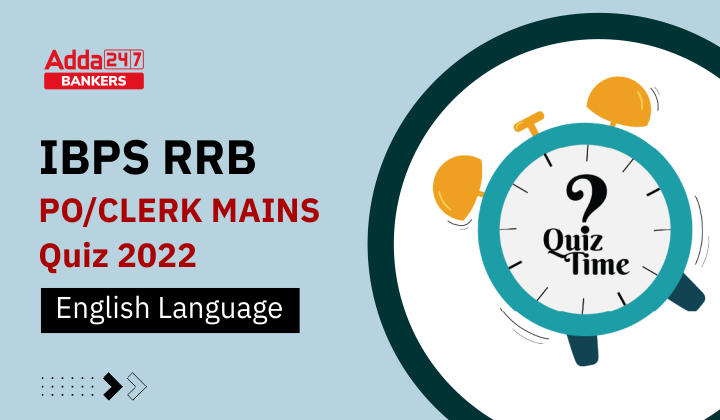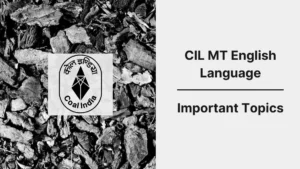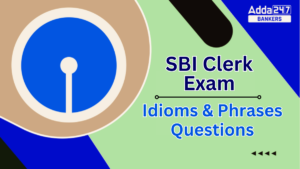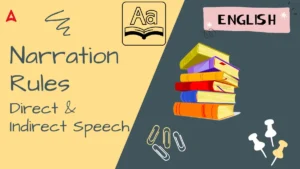Directions (1-5): In each of the given questions an inference is given in bold which is then followed by three paragraphs. You have to find the paragraph(s) from where it is inferred. Choose the option with the best possible outcome as your choice.
Q1. The Communist society is more or less the perquisite of Marx’s dogmas.
(1)The Communist ideology is derived, on the one hand, from the penetrating insights of Karl Marx on the contradictions of Victorian capitalism and, on the other, from the violent determination of Leninist regimes to impose their version of utopia on feudal societies.
(2)Marx’s vision of communist society is remarkably (and perhaps intentionally) vague. Unlike earlier “utopian socialists,” whom Marx and Engels derided as unscientific and impractical—including Henri de Saint-Simon, Charles Fourier, and Robert Owen—Marx did not produce detailed blueprints for a future society. Some features that he did describe, such as free education for all and a graduated income tax, are now commonplace.
(3)The Russian Revolution in 1917 (exactly 100 years ago), was highly driven by the communist ideology. This led to the formation of the USSR which was primarily an ideology-driven state, the ideology being Marxism-Leninism. The reason why Marx and his works left such a deep impact on the masses was because Marx scientifically argued how a section of people were getting richer at the expense of a much larger poor population.
(a)Only (1)
(b)Only (2)
(c)Only (3)
(d)Both (1) and (3)
(e)All of the above
Q2. China’s rise as a draconian superpower may create bipolar disorder in international relations.
(1)China’s rise with an authoritarian regime has led to the ‘war with China’ theme propelling the American academic discourse. If only China were a democracy of some kind, the arguments of ‘democratic peace theory (that is, democracies do not fight)’would have diluted the war-mongering theories.
(2) The consequences of an authoritarian China are already visible in its foreign policy behavior and wider international relations. The Chinese leadership is promoting nationalism as a diversionary tactics inducing aggressive posture in foreign policy behavior, particularly towards Japan, and to some extent, the US.
(3)The rise of China’s economic influence in the region, paired with diminished U.S. criticism on human-rights issues, has helped pave the way for a hardline agenda among regional governments, who also now stand to benefit from playing two of the world’s major superpowers off each other.
(a)Only (1)
(b)Only (2)
(c)Both (1) and (2)
(d)Both (2) and (3)
(e)All of the above
Q3. A wealth of linguistic richness exists outside what are called the official languages of India.
(1)Uttarakhand is home to Hindi and many Pahari languages like Garhwali, Kumaoni and Jaunsari. Sanskrit has been given the status of second official language in the state. But besides these languages, many Tibeto-Burman languages are also spoken in this region, including Bhoti, Jad, Rangkas, Darmiya, Byangsi, and Chaudangsi.
(2)There is proof of the intermixing of Dravidian and Indo-Aryan languages through the pockets of Dravidian-based languages on remote areas of Pakistan, and interspersed areas of North India. In addition, there is a whole science regarding the tonal and cultural expression within the regional languages that are quite standard across India. Thus this process creates languages which deviate from its original structure.
(3)Among the most persistent myths about languages in India is that Sanskrit is the ancestor of all Indian languages. This is as stubborn a myth as the other myth about Hindi being India’s national language. (It isn’t. The constitutional status of Hindi is that of an “official” language, along with English.)
(a)Only (1)
(b)Only (3)
(c)Both (1) and (2)
(d)Both (2) and (3)
(e)All of the above
Q4. The Indian policies entail a greater effort in ensuring smooth and rational business environment.
(1)In order to undertake effective policies to improve the business environment in India, we must strive to comprehend what causes it to be relatively good in some situations and poor in others. The NITI Aayog-IDFC study throws light on some of the broad trends in the country’s business environment but fails to provide a deeper understanding of its causes due to the lack of a conceptual framework to analyse the data.
(2)The Department of Industrial Policy and Promotion (DIPP) has been focused at improving policies and guidelines for doing business in India. The emphasis has been mainly to rationalise and simplify the existing rules, along with introducing technology for making governance more effective and efficient. A prominent change had been online availability of applying for Industrial License and Industrial Entrepreneur Memorandum 24*7.
(3)The pace of development has been impressive in the last few years, Bulcke said lauding the government for improvement in India’s ranking in World Bank’s report on ease of doing business. India has jumped 30 places to rank 100th in the World Bank’s ‘ease of doing business’ ranking, sending the jubilant government to vow to continue reforms that will help the country break into top 50 in coming years.
(a)Only (1)
(b)Both (1) and (2)
(c)Both (2) and (3)
(d)Both (1) and (3)
(e)All of the above
Q5. Artificial Intelligence will be the growth driver of economic transformation.
(1)But what about Artificial Intelligence? Many jobs involving routine (and thus codifiable) tasks have been eliminated: Banking transactions are digitized, cheques are processed by optical readers, call centres use software to shorten the conversations between customer and employee, or even replace humans with bots. This has resulted in increased efficiency.
(2)Some humans may hope to become immortal parts of these ecologies through brain scans and “mind uploads” into virtual realities or robots, a physically plausible idea discussed in fiction since the 1960s. However, to compete in rapidly evolving AI ecologies, uploaded human minds will eventually have to change beyond recognition, becoming something very different in the process.
(3)Humanity has, arguably, invested more faith – belief based on things we cannot know or do not understand – in artificial intelligence than any other concept in recent memory. When computers teach themselves to create better algorithms than the humans who created them – we’re seeing things happen that even the developers themselves can’t fully explain.
(a)Only (1)
(b)Only (2)
(c)Only (3)
(d)Both (1) and (3)
(e)All of the above
Directions (6-8): In each of the following questions, a part of the sentence is given in bold; it is then followed by three sentences which try to explain the meaning of the phrase given in bold. Choose the best set of alternatives from the five options given below each question which explains the meaning of the phrase correctly without altering the meaning of the sentence given to the question.
Q6. The extent to which great power privilege is institutionalized in the UN Charter is exceptional in the comity of nations and anathema to the democratic spirit.
(I)The degree to which great power privilege is established in the UN Charter is exceptional in the association of nations and repugnance to the democratic atmosphere.
(II)The great power privilege vested in the UN charter is exceptional in challenging the committee of different nations and its democratic dynamism.
(III)There is a great degree to which power privilege is institutionalized in the UN Charter which is exceptional in driving the participating nations towards democratic zeal.
(a)Only (I) is correct
(b)Only (III) is correct
(c)Both (I) and (II) are correct
(d)Both (II) and (III) are correct
(e)All are correct
Q7. Public health service functions mainly within the biomedical paradigm, marked by the curative rather than the preventive aspect.
(I)Public health service generally follows the biomedical model which focuses more on remedial facet than the preventive aspect.
(II)The Biomedical pattern is mainly known for the therapeutic aspect rather than the inhibitory one, defining how public health service should function.
(III)Public health service usually works within the biomedical process, concentrating more on restoring the health of the person rather than preventing the disease from occurring.
(a)Only (I) is correct
(b)Only (II) is correct
(c)Both (II) and (III) are correct
(d)Both (I) and (III) are correct
(e)All are correct
Q8. Health planning in India has hived off the technological from the socio-economic strategy of disease control because the former seems to be cheaper.
(I)Health planning in India has integrated the technological plan and the socio-economic approach of disease control as the former seems to be cheaper.
(II)Health planning in India has consolidated the technology along with the socio-economic strategy of disease control because the former seems to be a cheaper choice.
(III)Health planning in India has segregated the technological procedure from the socio-economic strategy of disease control since the former seems to be economical.
(a)Only (I) is correct
(b)Only (II) is correct
(c)Only (III) is correct
(d)Both (I) and (II) are correct
(e)All are correct
Directions (9-13): Five statements are given below, labelled a, b, c, d, and e. Among these, four statements are in logical order and form a coherent paragraph. From the given options, choose the option that does not fit into the theme of the paragraph.
Q9.
(a)As these problems recede, coal might start looking attractive once again, at least from a commercial point of view.
(b)It is worth noting that coal-based thermal power plants in India have declined in importance over the past few years partly because of commercial considerations.
(c)And given that coal remains the cheapest source of power, it will continue to be a tempting option for an emerging economy with a large power deficit.
(d)The pile of bad debt and overcapacity in the sector has made investments in new thermal power plants relatively unattractive.
(e)It remains to be seen whether India signals that shift at Bonn, or chooses to stay the course for now.
Q10.
(a)Both dimensions are necessary and we should take a cue from China which has developed a network of 22,000 km of HSR over the past 15 years.
(b)But, as they say, the devil always lies in the details.
(c)These investments are not comparable as these are not alternative choices at all.
(d)Comparing the investment in the bullet train project with investment in renovation and upgradation of conventional railways is odious.
(e)It plans to expand it to 30,000 km by 2020.
Q11.
(a)A rider is an add-on cover to the base policy that provides additional benefits.
(b)You can do that by buying a term life rider.
(c)Life insurance companies offer a range of optional riders that you can buy at an additional premium to suit your needs.
(d)The benefits of this get passed on to you and you may end up buying a rider a tad cheaper than a standalone policy.
(e)How do you increase the life insurance element in a bundled plan?
Q12.
(a)The money received from winning lotteries, games shows, crossword puzzles, races—including horse races—are considered as ‘income from other sources’.
(b)The rate of tax can vary because while cess of 3% of the tax is charged for all income groups, the surcharge 10% and 15% of the amount of tax is applicable if the net taxable income of an assessee exceeds Rs50 lakh and Rs1 crore respectively.
(c)Although she won Rs1 crore, a substantial amount from it will go towards the income tax.
(d)However, as per section 115BB of the Income-tax Act, 1961, the entire income from above sources will attract tax at the rate of 30%, along with applicable cess and surcharge.
(e)This means, the total tax on these winnings can be as high as 35.53%, depending on your income-tax slab.
Q13.
(a)It is set up in a ‘free market’ economic paradigm where rational economic agents maximize utility by analysing all available information to participate in market equilibrium.
(b)Thaler’s Nobel Prize win is a huge push back to this bull-headed sticking of market fundamentalists to a perfect vision that only they can see, of the world that flies in the face of the real world.
(c)The first thing to change will be disclosures that firms make on financial products.
(d)Disclosures will move to being machine readable and the manner of disclosure will take on a much bigger importance.
(e)If behavioural economics begins to influence policy and regulation in retail finance, I anticipate changes in the way the game is set up.
Directions (14-15): In questions given below there are two statements, each statement consists of two blanks. You have to choose the option which provides the correct set of words that fits both the blanks in both the statements appropriately and in the same order making them meaningful and grammatically correct.
Q14.
(1)Inequities cannot be _____________ without absolute will, and the _____________ of company leadership.
(2)There was the dreary monotone of _____________ hope in Porter’s voice as he spoke about the lost ______________.
(a)humbled, obligation
(b)ruined, stipulation
(c)subjugated, concordat
(d)crushed, commitment
(e)separated, diligence
Q15.
(1)Diversity must be everyone’s _____________, and that can be fostered by creating ______________ structures.
(2)These were arranged in accordance with their claim to _____________, especially considering their ______________ efforts.
(a)priority, collaborative
(b)underlining, planned
(c)prerogative, acquiescent
(d)perquisite, favorable
(e)liberty, corresponding
Solutions
S1. Ans. (d)
Sol.
Read the paragraph (1) carefully, it is clearly mentioned that the Communist ideology is derived on the backdrop of precepts from Karl Marx and Leninist regimes. Thus it agrees with the inference so generated. In the case of paragraph (2), there is a contradicting belief stating Marx’s vision of communist society is vague and the certain features that he described are ordinary. Thus the given paragraph doesn’t follow the inference. In the paragraph (3), the example of the Russian Revolution in 1917 which was highly driven by the communist ideology marks a valid contribution from Karl Marx and his unprecedented dogmas. Thus it also agrees with the given inference. Hence both the paragraphs (1) and (3) derive the similar inference, “The Communist society is more or less the perquisite of Marx’s dogmas.”
S2. Ans. (e)
Sol. The passage (1) depicts the similar theme that China’s rise as an authoritarian regime may create a disorder among different nations. The mention of “war-mongering theories” describes the possibility of unstable pattern of peaceful relations. In the case of paragraph (2), China’s aggressive foreign policy behavior towards Japan and the US indicates the possible hot and cold relations between the two countries respectively. Thus the inference so generated makes a valid proof to this passage. Similarly, the paragraph (3) mentions the impact of economic domination of China that has led to some relief to regional governments. The given paragraph also indicates that there is a presence of unstable relation of China with other countries. Hence all the three paragraphs derive the same inference, “China’s rise as a draconian superpower may create bipolar disorder in international relations.”
S3. Ans. (c)
Sol. Examine the inference carefully, it implies that the languages, besides officially considered ones describe the linguistic richness of our country. Among these three passages, paragraphs (1) and (2) describe the different languages being spoken in the state of Uttarakhand and North India and their importance in creating vast linguistic diversity. Thus both the paragraphs generate the same inference. However, in the case of the paragraph (3), there is a mention of myths related to official language of the country. Thus it doesn’t agree with the given inference. Hence both the paragraphs (1) and (2) derive the similar inference, “A wealth of linguistic richness exists outside what are called the official languages of India.”
S4. Ans. (b)
Sol. There are clear indications in the paragraphs (1) and (2) that India needs to work towards improving its business environment through various extensive policies and bringing new changes and reforms in the existing mechanisms. Thus they infer the similar meanings. But in the case of paragraph (3), it infers a different meaning. It is more about the achievement in the field of business in the country and a need to maintain such progress in the future. Hence both the paragraphs (1) and (2) agree with the given inference, “The Indian policies entail a greater effort in ensuring smooth and rational business environment.”
S5. Ans. (a)
Sol. The given inference specifically mentions the role of Artificial Intelligence in the economic transformation. If we study these three paragraphs carefully, we will be able to infer that only paragraph (1) can be related to the economy as it describes the changes that we have seen in our economic world with the evolvement of Artificial Intelligence and its subsequent implementation in the system. Thus the paragraph agrees with the inference so generated. However, the other two paragraphs are out of the context. They are moving more towards the ifs and buts of Artificial Intelligence. There is a clear absence of discussion related to the economic transformation in the two paragraphs. Thus neither of them follows the given inference. Hence, only paragraph (1) expresses the correct inference, “Artificial Intelligence will be the growth driver of economic transformation.”
S6. Ans. (a)
Sol. The phrase given in bold, “the comity of nations and anathema to the democratic spirit” implies a direct and straight meaning to the sentence which completes the former part of the sentence in a meaningful way. It simply means “the association of nations and aversion to the democratic atmosphere.” Thus among the three statements, only (I) provides the clear and straightforward meaning of the phrase to the sentence without altering the meaning of the actual sentence. The other two statements give a different and inappropriate meaning to the original sentence. Hence only statement (I) is the correct option.
S7. Ans. (d)
Sol. The phrase given in bold, “marked by the curative rather than the preventive aspect” can well be explained by the third statement given as an alternative. It defines the meaning of the phrase in the most simple and logical way without altering the true essence of the sentence. The first statement also expresses the similar meaning. However, the second statement is partly correct but the sentence implies a different meaning which doesn’t agree with the meaning of the actual sentence. Thus only the first and the third statements explain the correct meaning of the phrase given in bold. Hence (d) is the correct choice.
S8. Ans. (c)
Sol. The phrase, “hive off” means “break away from or as if from a group; become separate.” Thus the phrase given in bold “hived off the technological from the socio-economic strategy of disease control” implies “separation of the technological aspect from the socio-economic strategy of disease control.” Thus among the given three statements, only (III) follows the correct meaning of the phrase without altering the meaning of the actual sentence. The other two statements give a completely opposite meaning to the phrase and thus they are incorrect in the context of their meanings.
S9. Ans. (e)
Sol. The paragraph talks about the coal-based thermal power plants in India that have declined in importance over the past few years due to excess of bad debt and overcapacity in the power sector. It can be viewed in the sequence of “bdac” which forms the coherent paragraph. Option (e) doesn’t fit in this sequence as it refers to some shift which has no connection with any other sentences. Hence option (e) is the correct choice of elimination.
S10. Ans. (b)
Sol. The sentences in the sequence of “dcae” form a coherent paragraph which throws light on the statistical figures of the bullet train project. Among the given options, only option (b) finds no connection with any of the other sentences of the paragraph as it is referring to some details having no relevance in any other sentences. Hence (b) is the correct choice of elimination.
S11. Ans. (d)
Sol. The sentences in the sequence of “ebac” form a coherent paragraph which talks about the life insurance element “life rider.” Read the sentence given as option (d) which indicates about the benefits of something which finds no relevance from any other sentences. Thus it doesn’t belong to the paragraph so formed. Hence option (d) is the correct choice of elimination.
S12. Ans. (c)
Sol. The sentences in the sequence of “adeb” form a coherent paragraph which is all about the taxable incomes from winning lotteries, games shows, crossword puzzles, races—including horse races that come under the Income-tax Act, 1961. Among the given options, the sentence (c) finds no relevant match with any other sentences as the mention of “she” in the sentence (c) finds no connectivity. Thus it doesn’t belong to the paragraph so formed. Hence (c) is the correct choice of elimination.
S13. Ans. (a)
Sol. The sentences in the sequence of “becd” form a coherent paragraph which is about the behavioral economics and its mechanisms. The paragraph brings the special mention of Thaler’s Nobel Prize win. Among the given options, except the sentence (a), all other sentences are interconnected following a logical a string to form a coherent paragraph. The sentence (a) fails to be the part of the paragraph so formed. Hence option (a) is the correct choice of elimination.
S14. Ans. (d)
Sol. “crushed, commitment” is the correct set of words that fit perfectly into both the sentences adding appropriate meanings to both the sentences. It is to be noted that the word “crushed” in the first case will be used as a verb which means “deform, pulverize, or force inwards by compressing forcefully; compressed.” In the second sentence, the word “crushed” will be used as an adjective which means “exhibiting mental discomfort, ill at ease.” The other word “commitment” means “the state or quality of being dedicated to a cause, activity, etc.” Hence (d) is the correct choice.
Stipulation means a condition or requirement that is specified or demanded as part of an agreement.
Concordat means an agreement or treaty, especially one between the Vatican and a secular government relating to matters of mutual interest.
Subjugated means bring under domination or control, especially by conquest.
Diligence means careful and persistent work or effort.
S15. Ans. (a)
Sol. “priority, collaborative” is the correct set of words that fit perfectly into both the sentences adding appropriate meanings to both the sentences. The word “priority” means “the fact or condition of being regarded or treated as more important than others.” The other word “collaborative” means “produced by or involving two or more parties working together.” Hence (a) is the correct option.
Prerogative means a right or privilege exclusive to a particular individual or class.
Acquiescent means ready to accept something without protest, or to do what someone else wants.
Perquisite means a benefit which one enjoys or is entitled to on account of one’s job or position.





 Important Topics for CIL MT English Lang...
Important Topics for CIL MT English Lang...
 Idioms and Phrases Questions for SBI Cle...
Idioms and Phrases Questions for SBI Cle...
 Narration Rules for Direct & Indirec...
Narration Rules for Direct & Indirec...





